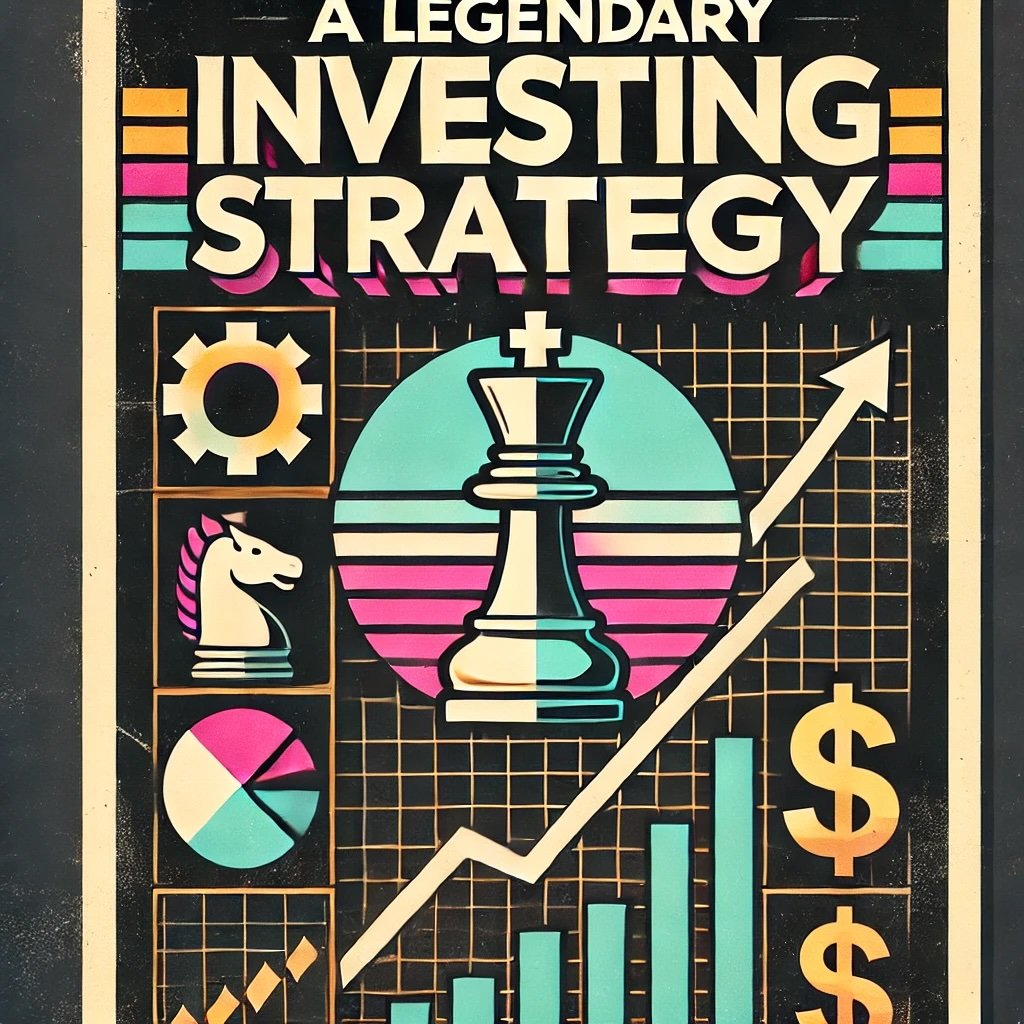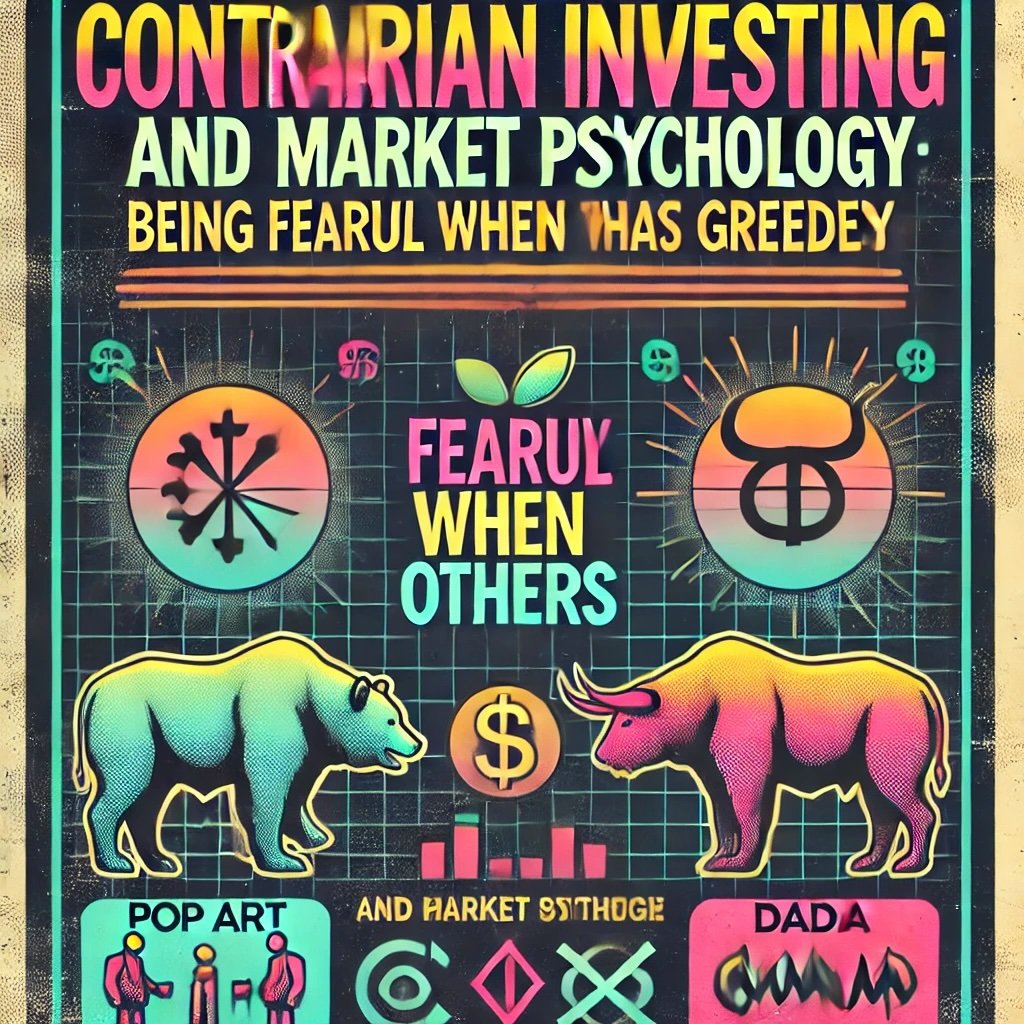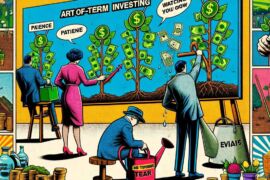When it comes to investing legends, Warren Buffett is a name that invariably tops the list. Over the course of his remarkable career, he has transformed from a young boy with a paper route into one of the wealthiest individuals on the planet. Buffett is the chairman and CEO of Berkshire Hathaway, a multinational conglomerate holding company, and is renowned for his keen eye for value and steadfast investment principles. For decades, he has consistently outperformed the market, earning him the nickname the “Oracle of Omaha.” His success isn’t just measured in dollars; it’s reflected in the enduring respect he commands in the financial world.

- Consistent Outperformance: Buffett has achieved average annual returns significantly higher than the S&P 500.
- Value Investing Pioneer: He popularized the concept of value investing, focusing on undervalued companies with strong fundamentals.
- Philanthropic Leader: Committed to giving away the majority of his wealth, showcasing his dedication to social responsibility.
Tip: Studying Buffett’s approach offers invaluable insights into disciplined and effective investing strategies.
His reputation isn’t just built on numbers; it’s cemented by his ability to navigate complex markets with simplicity and wisdom. Buffett’s investment strategy centers around patience, discipline, and a long-term perspective—qualities that have allowed him to beat the market consistently over the years. He doesn’t chase trends or get swayed by market hysteria; instead, he focuses on fundamental analysis and intrinsic value. This approach has not only brought him immense wealth but also set a benchmark for investors worldwide.
- Long-Term Focus: Emphasizes holding investments for extended periods to realize full value.
- Fundamental Analysis: Relies on in-depth research to assess a company’s true worth.
- Market Wisdom: Known for insightful quotes and teachings that guide investors through market volatility.
Tip: Emulating Buffett’s long-term and value-focused mindset can help you make more informed investment decisions.

The Legacy of Warren Buffett
The goal is to unveil the key elements of Warren Buffett’s investing strategy that have enabled him to outperform the market consistently. We’ll break down his philosophy into actionable principles that can be understood and applied by investors at all levels. Whether you’re a seasoned investor or just starting out, understanding Buffett’s approach can provide valuable guidance in navigating the financial markets.
- Demystify Complex Strategies: Simplify Buffett’s methods for practical application.
- Enhance Investment Skills: Equip readers with tools to analyze and select investments wisely.
- Promote Financial Literacy: Encourage informed decision-making based on proven principles.
Tip: As you read, consider how each principle aligns with your own investment goals and how you might incorporate them into your strategy.
By delving into how readers can apply these principles to their own investments, we aim to bridge the gap between theory and practice. Investing doesn’t have to be intimidating or reserved for the elite. With the right knowledge and mindset, anyone can take steps toward building wealth and securing their financial future. We’ll explore concepts like value investing, understanding intrinsic value, and the importance of a long-term horizon—all central to Buffett’s success.
- Actionable Insights: Provide step-by-step guidance on implementing strategies.
- Real-World Examples: Use Buffett’s investments to illustrate key points.
- Empowerment: Inspire confidence in readers to take control of their financial destinies.
Tip: Remember that successful investing is a journey; patience and continuous learning are your allies along the way.

Foundations of Buffett’s Investing Philosophy
Value Investing Principles
When you think of Warren Buffett’s investment success, it all traces back to one core approach: value investing. This philosophy wasn’t invented by Buffett himself but was significantly influenced by his mentor, Benjamin Graham, often called the “father of value investing”. Graham’s teachings, especially from his book “The Intelligent Investor”, laid the groundwork for Buffett’s strategy. The essence of value investing is buying stocks that are undervalued by the market yet have strong fundamentals. Buffett embraced this concept wholeheartedly, making it the bedrock of his investment methodology.
Value investing emphasizes purchasing stocks at prices lower than their intrinsic worth. It’s like buying a dollar for fifty cents. Buffett looks for companies with solid earnings, robust assets, and promising growth prospects that are temporarily overlooked or undervalued by the market. By doing so, he positions himself to reap significant rewards when the market eventually recognizes the company’s true value. This method requires patience and diligent research but has proven to yield substantial long-term gains.
- Originated by Benjamin Graham: The pioneer who introduced Buffett to value investing.
- Focus on Fundamentals: Prioritizes a company’s financial health over market trends.
- Market Inefficiencies: Capitalizes on temporary mispricings in the stock market.
Tip: Dive deep into a company’s financials to uncover undervalued gems that others might have missed.
The Concept of Intrinsic Value
At the heart of value investing lies the concept of intrinsic value. This refers to the actual worth of a company based on tangible and intangible factors, independent of its current stock price. Buffett is a master at determining a company’s intrinsic value by analyzing its financial statements, business model, and growth potential. He compares this intrinsic value to the market price to identify investment opportunities. If the market price is significantly below the intrinsic value, the stock is considered undervalued and a potential buy.
A crucial aspect of this approach is the margin of safety. This means only investing when there’s a substantial gap between the intrinsic value and the market price, providing a cushion against errors in estimation or unforeseen market downturns. The margin of safety acts as a risk management tool, ensuring that even if the company’s value doesn’t rise as expected, the investment is still protected to some extent. This conservative strategy helps Buffett minimize losses and maximize gains over time.
- Intrinsic Value vs. Market Price: Key to spotting undervalued investment opportunities.
- Margin of Safety: Investing with a built-in buffer to reduce risk.
- Conservative Estimates: Prefers cautious valuations to avoid overpaying for stocks.
Tip: Always include a margin of safety in your investment decisions to protect yourself from market volatility and estimation errors.
![]()
Long-Term Investment Horizon
One of Buffett’s most renowned principles is maintaining a long-term investment horizon. He famously stated, “Our favorite holding period is forever.” This means he invests in companies with the intention of holding onto them for many years, allowing the true value of the business to unfold. By focusing on the long term, Buffett leverages the power of compound interest, where the earnings from an investment are reinvested to generate additional earnings over time. This compounding effect can significantly amplify wealth accumulation.
Holding investments for extended periods also allows Buffett to ride out short-term market fluctuations. He doesn’t get swayed by daily stock price movements or economic headlines. Instead, he remains steadfast in his belief in the underlying value of his investments. This patience and discipline are central to his ability to consistently beat the market. Buffett understands that good things often take time, and he’s willing to wait to see his investments mature.
- Compound Interest: Reinvesting returns to accelerate growth over time.
- Reduced Transaction Costs: Fewer trades mean lower fees and taxes.
- Less Stressful Investing: Avoids the anxiety of short-term market swings.
Tip: Adopt a long-term perspective to benefit from compounding returns and reduce the impact of market volatility on your investments.
![]()
Key Components of Buffett’s Strategy
Investing in Businesses, Not Stocks
Warren Buffett doesn’t just buy stocks; he buys businesses. When he invests, he views each stock purchase as acquiring a piece of a real company, with all its assets, liabilities, and potential. This mindset shifts the focus from short-term price movements to the long-term health and profitability of the business. Understanding the company’s operations and industry becomes crucial. Buffett delves deep into how the company makes money, its competitive landscape, and its future prospects. By seeing stocks as parts of businesses, he aligns his interests with those of the company’s management and other shareholders.
- Long-Term Ownership: Treats stock investments as long-term commitments.
- Business Analysis: Prioritizes understanding over speculation.
- Alignment of Interests: Shares in the success or failure of the company.
Tip: Think like a business owner when investing, not just a trader looking for quick gains.
Circle of Competence
Buffett is famous for sticking to his circle of competence. This means he focuses on industries and companies he understands thoroughly. By investing within his expertise, he can make more informed decisions and better assess risks and opportunities. He avoids ventures into unfamiliar sectors, even if they seem lucrative, because he knows the limitations of his knowledge. This discipline minimizes risk and prevents costly mistakes. It’s not about how big your circle is, but knowing its boundaries and staying within them.
- Specialization: Concentrates on areas where he has deep knowledge.
- Risk Reduction: Avoids pitfalls associated with unfamiliar industries.
- Confidence in Decisions: Makes investment choices with greater certainty.
Tip: Identify your own circle of competence and invest within it to improve your success rate.
Economic Moats
An essential component of Buffett’s strategy is seeking out companies with strong economic moats. These are businesses that possess durable competitive advantages that protect them from competitors. Factors contributing to a strong moat include brand reputation, patents, cost advantages, and network effects. Buffett looks for companies that can maintain profitability over the long term because of these moats. By investing in such companies, he ensures that his investments are more likely to withstand market pressures and continue growing.
- Brand Strength: Companies with a loyal customer base and strong recognition.
- Patents and Intellectual Property: Legal protections that prevent imitation.
- Cost Leadership: Ability to produce goods or services more cheaply than competitors.
Tip: Invest in companies with clear competitive advantages that are difficult for others to replicate.

Quality Management
Buffett places significant importance on the quality of a company’s management team. He evaluates the integrity, competence, and shareholder orientation of the leadership. A trustworthy and capable management team can make all the difference in a company’s success. Buffett prefers managers who act in the best interests of shareholders and have a track record of making smart decisions. He believes that good management can enhance a great business and turn around a struggling one.
- Integrity Matters: Leaders who are honest and transparent.
- Proven Track Record: Management with a history of making sound decisions.
- Shareholder Alignment: Executives who prioritize shareholder value.
Tip: Research the leadership team before investing to ensure they’re competent and aligned with your interests.

Contrarian Investing and Market Psychology
Being Fearful When Others Are Greedy
Understanding market cycles and investor emotions is crucial to successful investing. Markets often fluctuate between periods of excessive optimism and undue pessimism. When investors become overly confident, stock prices can soar beyond their intrinsic values. Warren Buffett advises caution during these times, as irrational exuberance can lead to inflated markets. Recognizing these emotional extremes helps you avoid making impulsive decisions based on herd mentality.
Avoiding overvalued markets driven by hype is essential for preserving your capital. When everyone is eager to buy, prices tend to rise, sometimes without fundamental justification. Buffett recommends stepping back when the crowd is rushing in, ensuring you don’t overpay for an asset. By being fearful when others are greedy, you can sidestep potential bubbles that may eventually burst. This approach safeguards you from significant losses when the market corrects itself.
- Spot Market Euphoria: Be alert to signs of irrational investor excitement.
- Assess True Value: Focus on fundamental analysis rather than hype.
- Practice Patience: Wait for opportunities that align with sound investment principles.
Tip: Always question whether a popular investment genuinely offers value or if it’s fueled by temporary market sentiment.
Being Greedy When Others Are Fearful
Capitalizing on market downturns to buy quality stocks at discounted prices is a hallmark of Buffett’s strategy. When fear grips the market, many investors sell off assets, often pushing prices below their true worth. Buffett sees these moments as prime buying opportunities, allowing him to acquire valuable companies at a fraction of their intrinsic value. By remaining calm and assessing the fundamentals, you can make strategic investments that others might overlook.
Historical examples where this approach proved successful are plentiful in Buffett’s career. During the 2008 financial crisis, he invested in companies like Goldman Sachs when their stock prices plummeted. These investments yielded substantial returns as the market recovered. Similarly, after the dot-com bubble burst, Buffett avoided tech stocks during the hype but purchased solid businesses when prices fell. These cases illustrate how contrarian investing can lead to significant gains over time.
- Identify Undervalued Stocks: Look for strong companies with temporarily depressed prices.
- Maintain a Long-Term Perspective: Focus on future potential rather than current market fear.
- Stay Emotionally Balanced: Avoid panic and make decisions based on analysis.
Tip: Keep a list of quality companies you’d like to own and be ready to act when market conditions make them affordable.
![]()
Ignoring Market Noise
Focusing on long-term value rather than short-term market fluctuations is essential for investment success. The stock market is filled with daily news, predictions, and opinions that can distract and confuse investors. Buffett chooses to ignore this “market noise”, concentrating instead on the fundamental performance of his investments. By not reacting to every piece of news, he avoids unnecessary trading and stays committed to his strategy.
The importance of independent thinking and sticking to one’s investment thesis cannot be overstated. Buffett trusts his own research and convictions, even when they differ from popular opinion. He understands that following the crowd can lead to subpar results. By developing your own informed perspective, you can make decisions that align with your goals and risk tolerance. Staying true to your investment thesis helps you navigate volatile markets with confidence.
- Limit Media Consumption: Reduce exposure to sensationalist financial news.
- Trust Your Analysis: Rely on your research rather than external noise.
- Stay Disciplined: Adhere to your investment plan despite market distractions.
Tip: Regularly revisit your investment thesis to reinforce your confidence and ensure it remains aligned with your objectives.

Real-Life Applications of Buffett’s Strategy
Case Study: Coca-Cola
How Buffett identified Coca-Cola’s value and moat.
Warren Buffett’s investment in Coca-Cola is one of his most celebrated moves. In the late 1980s, he recognized that Coca-Cola had an unparalleled brand strength and a product with universal appeal. People around the globe associated the drink with happiness and nostalgia. This deep-rooted brand loyalty created a substantial economic moat, making it difficult for competitors to erode Coca-Cola’s market share. Buffett understood that such a strong brand would continue to generate consistent profits over time.
He delved into the company’s financials and saw steady earnings growth and impressive profit margins. The company’s ability to adapt its marketing strategies and expand internationally caught his attention. Buffett also appreciated Coca-Cola’s simple business model—selling a product that costs pennies to make but sells in massive volumes worldwide. By identifying these factors, he concluded that the market was undervaluing the company’s true potential.
- Global Recognition: Coca-Cola is a household name in almost every country.
- Consistent Demand: The product enjoys unwavering consumer demand regardless of economic conditions.
- Scalable Business Model: Easy to replicate success in new markets due to minimal localization needs.
Tip: Look for companies with strong brands and simple business models—they often have lasting competitive advantages.
The long-term success of this investment.
Buffett began accumulating Coca-Cola shares in 1988, investing over $1 billion—a significant amount at the time. This investment has since grown exponentially, becoming one of Berkshire Hathaway’s largest holdings. Over the decades, Coca-Cola’s stock price has appreciated considerably, and the company has provided consistent dividends. Buffett’s patience and long-term outlook allowed him to benefit from the company’s sustained growth and global expansion.
The dividends received have been reinvested, amplifying the effects of compound interest. Coca-Cola’s ability to innovate and introduce new products has kept it relevant, ensuring continued profitability. Buffett’s initial investment has yielded returns many times over, showcasing the effectiveness of his strategy. This move solidified his reputation for identifying and investing in companies with durable moats.
- Dividend Income: Regular dividends have provided a steady cash flow.
- Capital Appreciation: Significant increase in stock value over time.
- Enduring Relevance: Coca-Cola remains a dominant player in the beverage industry.
Tip: Investing in companies with enduring competitive advantages can lead to substantial long-term gains.
![]()
Case Study: Apple Inc.
Buffett’s rationale for investing in a tech company.
Traditionally, Buffett avoided technology stocks, citing a lack of understanding of the sector. However, in 2016, he made a significant investment in Apple Inc. So, what changed? Buffett began to see Apple not just as a tech company but as a consumer products leader with a loyal customer base. He recognized that Apple’s ecosystem created a strong economic moat, with customers often remaining within the brand due to product integration and user experience.
He was impressed by Apple’s consistent earnings, strong profit margins, and substantial cash reserves. The company’s ability to generate repeat business through device upgrades and services like the App Store and Apple Music added to its appeal. Buffett also admired CEO Tim Cook’s leadership and the company’s commitment to innovation. By applying his investment principles to Apple, he saw a company that fit well within his strategy despite being in the tech sector.
- Brand Loyalty: Apple users are often dedicated to the brand, leading to repeat purchases.
- Diversified Revenue Streams: Income from hardware sales, services, and software.
- Financial Strength: Robust balance sheet with significant cash holdings.
Tip: Don’t dismiss a company based on its industry—evaluate it against your investment criteria to uncover hidden opportunities.
Understanding the shift in his traditional investment approach.
Buffett’s investment in Apple marked a notable shift from his usual avoidance of technology companies. This move demonstrated his ability to adapt and recognize value where others might not. He applied his traditional focus on economic moats, strong management, and financial health to a company in a rapidly evolving industry. By expanding his circle of competence, Buffett showed that flexibility can be beneficial when grounded in solid investment principles.
This shift also reflected the changing nature of technology in everyday life. Buffett acknowledged that some tech companies had become integral to consumer habits, much like the companies he traditionally invested in. His success with Apple proved that his investment philosophy could be applied across different industries when approached thoughtfully.
- Adaptability: Willingness to revise his views in light of new information.
- Consistent Principles: Continued to apply his core investment criteria.
- Recognition of Value: Identified Apple’s true worth beyond the tech label.
Tip: Stay open to reevaluating your investment boundaries—new opportunities may align with your principles in unexpected ways.
Lessons Learned from These Investments
Common themes and strategies applied.
Both the Coca-Cola and Apple investments highlight Buffett’s commitment to his core strategies. In each case, he identified companies with strong economic moats—brands with loyal customer bases and the ability to fend off competitors. He thoroughly understood their business models, staying within or expanding his circle of competence. Buffett also demonstrated patience, investing with a long-term horizon and not being swayed by short-term market fluctuations.
Another common theme is his focus on companies with strong financials and effective management. He looked for solid earnings, healthy balance sheets, and leadership that aligned with shareholder interests. By applying these consistent strategies, Buffett was able to achieve substantial returns in different industries.
- Economic Moats: Prioritized companies with lasting competitive advantages.
- Thorough Analysis: Made investment decisions based on deep understanding.
- Long-Term Commitment: Focused on the future potential of his investments.
Tip: Consistency in applying your investment principles can lead to success across various sectors.
Insights into adapting investment principles to different industries.
Buffett’s venture into Apple shows that core investment principles can be adapted to new industries. By focusing on the fundamental qualities of a company—like brand strength, financial health, and competent management—you can apply these principles beyond traditional sectors. This adaptability is crucial in a dynamic market landscape where industries evolve rapidly.
His approach teaches investors to be flexible without compromising on fundamental criteria. It’s about recognizing value in different forms and being willing to step outside your comfort zone when justified by thorough analysis. Buffett’s success in both traditional and tech industries underscores the universality of his investment philosophy when applied thoughtfully.
- Flexibility: Be willing to explore new sectors if they meet your investment standards.
- Fundamental Focus: Prioritize core company qualities over industry stereotypes.
- Continuous Learning: Stay informed about industry trends to make educated decisions.
Tip: Adapt your investment approach as markets evolve, but stay true to your underlying principles.

Implementing Buffett’s Strategy as an Individual Investor
Assessing Personal Investment Goals and Risk Tolerance
Implementing Warren Buffett’s strategies starts with aligning them with your own financial objectives. Before diving into the market, take the time to define what you want to achieve with your investments. Are you saving for retirement, building wealth, or generating passive income? Understanding your goals will help you tailor Buffett’s principles to your situation. Additionally, assess your risk tolerance—how much volatility can you handle without losing sleep? Buffett’s approach is methodical and long-term, but individual comfort levels vary.
- Set Clear Objectives: Define short-term and long-term financial goals.
- Evaluate Risk Appetite: Determine how much risk you’re willing to take.
- Match Strategy to Goals: Align investment choices with your objectives and risk tolerance.
Tip: Regularly revisit your goals and risk tolerance, as they may change over time due to life events or market conditions.
Understanding your own circle of competence is equally important. Focus on industries and companies you genuinely understand. If you’re knowledgeable about technology or healthcare, start there. Investing within your expertise allows you to make more informed decisions and reduces the likelihood of costly mistakes. Remember, it’s okay to pass on opportunities outside your circle—you don’t have to invest in everything.
- Identify Your Strengths: List industries you know well.
- Stay Within Boundaries: Avoid venturing into unfamiliar sectors.
- Leverage Your Knowledge: Use your expertise to analyze companies more effectively.
Tip: Continuously expand your circle of competence through education, but be cautious about investing in new areas until you’re confident.
Conducting Fundamental Analysis
To invest like Buffett, you need to conduct thorough fundamental analysis to determine a company’s intrinsic value. Start by examining financial statements—look at earnings, revenue growth, debt levels, and cash flow. Assess the company’s business model: How does it make money? Who are its competitors? What are its growth prospects? This deep dive helps you understand whether a company is undervalued or overvalued by the market.
- Analyze Financials: Study balance sheets, income statements, and cash flow statements.
- Understand the Business: Know how the company operates and generates profit.
- Evaluate Competitive Advantage: Identify if the company has an economic moat.
Tip: Use tools like annual reports, financial news outlets, and investment platforms to gather information and support your analysis.
There are numerous tools and resources available for individual investors. Websites like Yahoo Finance, Morningstar, and Seeking Alpha provide valuable data and analysis. Investment books such as “The Intelligent Investor” by Benjamin Graham and “Common Stocks and Uncommon Profits” by Philip Fisher can deepen your understanding. Online courses and webinars can also enhance your skills.
- Financial Websites: Utilize free online platforms for up-to-date information.
- Educational Materials: Read books and articles from respected investors.
- Professional Advice: Consider consulting with a financial advisor for personalized guidance.
Tip: Continuously update your toolkit of resources to stay informed about market trends and company performance.
![]()
Warren Buffett’s Investing Strategy for Beating the Market — 12-Question FAQ
How does Buffett’s strategy aim to beat the market?
By owning a focused set of high-quality businesses purchased below intrinsic value and held for many years. The edge comes from discipline: staying within a circle of competence, insisting on a margin of safety, and letting compounding work while avoiding permanent capital loss.
What’s the simplest way to estimate intrinsic value like Buffett?
Project conservative owner earnings (free cash flow adjusted for maintenance capex), fade growth to a steady rate, and discount at a required return. Cross-check with long-term multiples (EV/FCF, EV/EBIT) versus history and peers. Treat value as a range and act only when price is well below the low end.
How big should my margin of safety be?
For durable, predictable compounders, many investors target ~20–30%. For cyclicals or businesses with uncertain economics, demand more. The weaker your confidence in forecasts, the larger the required gap between price and value.
What qualifies as an economic moat in Buffett’s framework?
Advantages competitors can’t easily erode for a decade or more: pricing power from brand, cost leadership at scale, network effects, high switching costs, unique assets/rights, and advantaged distribution. Evidence shows up in persistently high ROIC and resilient margins across cycles.
How does Buffett judge management quality?
Integrity first, then rational capital allocation and candor. Look for plain-English shareholder letters, smart reinvestment or buybacks when cheap, prudent debt use, and a history of owning mistakes. Avoid promotional storytelling, empire building, and chronic dilution.
Should I concentrate or diversify?
Buffett concentrates in his best ideas within his circle of competence, but only when the downside is well-understood. A practical approach for individuals: anchor your plan with broad, low-cost index funds, then layer selective concentration in a few high-conviction compounders you truly understand.
When does Buffett sell?
When the thesis breaks (moat erosion, management integrity issues), a much better opportunity arises, or valuation becomes extreme relative to long-term prospects. Otherwise, low turnover preserves tax efficiency and lets compounding run.
How do I apply “be fearful when others are greedy” without market timing?
Use rules. In euphoric phases, raise quality and margin-of-safety bars; in fearful phases, work a prepared buy-list and scale in with tranches. You’re not predicting; you’re improving expected outcomes with discipline.
What metrics best reflect Buffett-style quality?
High and durable ROIC, strong free cash flow conversion, modest leverage with ample interest coverage, stable or rising gross margins, growing per-share value (not just absolute growth), and evidence of pricing power.
How can an individual mimic “float” advantages?
You can’t run an insurer, but you can mimic the spirit: keep an ample cash buffer for opportunities, lock in low-cost financing only when prudent, and use recurring savings (paycheck “float”) to buy more when prices are attractive.
How do I start implementing this strategy in the next 30 days?
Define your circle of competence; build a 1-page thesis template (moat, management, economics, risks); screen for high-ROIC, low-debt firms; estimate value ranges; set buy/trim rules; create a ranked buy-list; begin accumulating in tranches; schedule quarterly thesis reviews.
What are the most common mistakes to avoid?
Chasing stories, paying any price for growth, straying outside your circle, over-trading, ignoring balance sheets, and abandoning a sound thesis due to headline noise. Keep a mistakes journal to tighten your process over time.
Cultivating Patience and Discipline
One of Buffett’s hallmark traits is his patience and discipline. To emulate this, practice maintaining a long-term investment perspective. Avoid getting swayed by daily market fluctuations or sensational news headlines. Stick to your investment thesis, and give your investments time to grow. Remember that wealth accumulation through investing is a marathon, not a sprint.
- Long-Term Focus: Keep your eyes on your long-term goals, not short-term market noise.
- Avoid Emotional Trading: Don’t make impulsive decisions based on fear or greed.
- Consistent Strategy: Follow your investment plan consistently over time.
Tip: Consider setting up automatic investments to reinforce discipline and remove emotional decision-making.
Avoiding common pitfalls like emotional trading and market timing is crucial. Trying to time the market often leads to missed opportunities and losses. Emotional reactions to market swings can derail your strategy. Instead, rely on your research and stay committed to your plan. If you’ve done your homework, trust your judgment even when the market is volatile.
- Trust Your Analysis: Believe in your research and investment choices.
- Stay the Course: Resist the urge to buy or sell based on market hype.
- Learn from Mistakes: If errors occur, analyze them objectively to improve.
Tip: Keep a journal of your investment decisions and the reasoning behind them to help you stay accountable and learn over time.
Continuous Learning and Improvement
Buffett is a voracious reader, and staying informed and educated is key to his success. Make a habit of reading financial news, annual reports, and investment books. Continuous learning keeps you updated on market trends and new investment opportunities. It also helps you refine your strategies and stay ahead of changes in the economy.
- Daily Reading: Dedicate time each day to read about finance and investing.
- Educational Resources: Take courses or attend seminars to enhance your knowledge.
- Networking: Join investment clubs or online forums to exchange ideas with others.
Tip: Schedule regular times for learning just as you would for exercise or other important activities.
Some recommended readings and resources include “The Essays of Warren Buffett” compiled by Lawrence Cunningham, which provides insights into Buffett’s thoughts. Podcasts like “Invest Like the Best” offer interviews with successful investors. Websites like Investopedia can help you understand complex financial concepts.
- Books: Expand your library with investment classics and contemporary analyses.
- Podcasts and Webinars: Use multimedia resources for learning on-the-go.
- Interactive Platforms: Engage with others to gain different perspectives.
Tip: Don’t just consume information—apply what you learn by reassessing your investment strategies regularly.
Conclusion
Incorporating Warren Buffett’s investment strategies involves aligning them with your personal goals, conducting thorough analysis, and maintaining discipline. By focusing on intrinsic value, investing within your circle of competence, and cultivating patience, you position yourself to potentially beat the market. Continuous learning and adaptation are also essential components of this journey.
- Align and Assess: Match strategies with your goals and risk tolerance.
- Analyze Deeply: Make informed decisions based on solid research.
- Stay Disciplined: Keep a long-term perspective and avoid emotional pitfalls.
Tip: Remember that successful investing is a continuous process of learning, application, and adjustment.
Embracing Buffett’s approach isn’t about copying his investments but about adopting the mindset and principles that have led to his success. Start by taking small steps—choose one principle to implement today. Over time, these practices can contribute significantly to your financial growth and help you navigate the markets with confidence.
- Start Small: Implement one strategy at a time.
- Be Patient: Give yourself time to learn and grow as an investor.
- Believe in Yourself: Trust that with dedication and discipline, you can achieve your investment goals.
Tip: Stay inspired by revisiting success stories and reminding yourself of the long-term benefits of disciplined investing.
Important Information
Comprehensive Investment Disclaimer:
All content provided on this website (including but not limited to portfolio ideas, fund analyses, investment strategies, commentary on market conditions, and discussions regarding leverage) is strictly for educational, informational, and illustrative purposes only. The information does not constitute financial, investment, tax, accounting, or legal advice. Opinions, strategies, and ideas presented herein represent personal perspectives, are based on independent research and publicly available information, and do not necessarily reflect the views or official positions of any third-party organizations, institutions, or affiliates.
Investing in financial markets inherently carries substantial risks, including but not limited to market volatility, economic uncertainties, geopolitical developments, and liquidity risks. You must be fully aware that there is always the potential for partial or total loss of your principal investment. Additionally, the use of leverage or leveraged financial products significantly increases risk exposure by amplifying both potential gains and potential losses, and thus is not appropriate or advisable for all investors. Using leverage may result in losing more than your initial invested capital, incurring margin calls, experiencing substantial interest costs, or suffering severe financial distress.
Past performance indicators, including historical data, backtesting results, and hypothetical scenarios, should never be viewed as guarantees or reliable predictions of future performance. Any examples provided are purely hypothetical and intended only for illustration purposes. Performance benchmarks, such as market indexes mentioned on this site, are theoretical and are not directly investable. While diligent efforts are made to provide accurate and current information, “Picture Perfect Portfolios” does not warrant, represent, or guarantee the accuracy, completeness, or timeliness of any information provided. Errors, inaccuracies, or outdated information may exist.
Users of this website are strongly encouraged to independently verify all information, conduct comprehensive research and due diligence, and engage with qualified financial, investment, tax, or legal professionals before making any investment or financial decisions. The responsibility for making informed investment decisions rests entirely with the individual. “Picture Perfect Portfolios” explicitly disclaims all liability for any direct, indirect, incidental, special, consequential, or other losses or damages incurred, financial or otherwise, arising out of reliance upon, or use of, any content or information presented on this website.
By accessing, reading, and utilizing the content on this website, you expressly acknowledge, understand, accept, and agree to abide by these terms and conditions. Please consult the full and detailed disclaimer available elsewhere on this website for further clarification and additional important disclosures. Read the complete disclaimer here.




